I'm Trying To Solve This Circuit Using Mesh Current Analysis But I'm getting that the currents are unsolvable (Matrix is wrong ) .
Question :
$$ \Downarrow $$My Try At Solving This :

I Randomly Chose Current Flow Directions , Then Using Mesh Current Analysis I Got : $$\begin{aligned}\left( 1\right) I_{1}\left( R_{2}+R_{1}+R_{1}\right) +I_{2}R_{2}+I_{3}R_{6}=V_{G}\\ \left( 2\right) I_{2}\left( R_{2}+R_{3}+R_{5}\right) +I_{1}R_{2}+I_{4}R_{5}=V_{S1}\\ \left( 3\right) I_{3}\left( R_{4}+R_{6}\right) +I_{1}R_{6}+I_{4}R_{4}=V_{G}\\ \left( 4\right) I_{4}\left( R_{0}+R_{4}+R_{5}\right) +I_{3}R_{4}+I_{2}R_{5}=V_{s2}\end{aligned}$$
Using KVL for \$i_{x}\$ We Get: $$\begin{aligned}\begin{cases}i_{x}=I_{1}+I_{2}\\ V_{0}=5\cdot i_{x}=5\cdot \left( I_{1}+I_{2}\right) \end{cases}\\\end{aligned} $$ And : $$\begin{aligned}\begin{cases}V_{Y}=-I_{1}\cdot R_{1}=-15\cdot I_{1}\\ I_{3}=i_{G}=0.4\cdot V_{Y}=-6I_{1}\end{cases}\end{aligned} $$
Hence We Get :
$$ \begin{gathered}\left( 1\right) I_{1}\cdot 30+I_{2}\cdot 10+I_{1}\cdot -30 & = 5 I_{1}+I_{2}\ \\ -I_{1}\cdot 5+I_{2}5 & = 0\\ \left( 2\right) I_{1}\cdot 10+I_{2}\cdot 35+I_{4}\cdot 5-25 & =0\\ \left( 3\right) I_{1}\cdot 5-I_{1}\cdot 180+I_{4}\cdot 25 & =5\left( I_{1}+I_{2}\right) \\ -I_{1}\cdot 180-I_{2} \cdot 5 +I_{4}\cdot 25 & =0\\ \left( 4\right) -I_{1} \cdot 150+I_{2}\cdot 5+I_{4}\cdot 40-50 & =0\end{gathered}$$
A Cleaner Look : $$ \begin{gathered}\left( 1\right)-I_{1}\cdot 5+I_{2}\cdot5 & = 0\\ \left( 2\right) I_{1}\cdot 10+I_{2}\cdot 35+I_{4}\cdot 5 & =25\\ \left( 3\right)-I_{1}\cdot 180-I_{2} \cdot 5 +I_{4}\cdot 25 & =0\\ \left( 4\right) -I_{1} \cdot 150+I_{2}\cdot 5+I_{4}\cdot 40 & =50\end{gathered}$$
Yet , there is NO SOLUTION to these Set of Equations (The system is inconsistent):
$$ \begin{pmatrix} -5 & 5 & 0 &\bigm|& 0\\ 10 & 35 & 5 &\bigm|& 25 \\ -180 & -5 & 25 &\bigm|& 0\\ -150 & 5 & 40 &\bigm|& 50\\ \end{pmatrix} \longrightarrow ... \longrightarrow \begin{pmatrix} 1 & 0 & 0 &\bigm|& \frac{25}{82}\\ 0 & 1 & 0 &\bigm|& \frac{25}{82} \\ 0 & 0 & 1 &\bigm|& \frac{185}{82}\\ 0 & 0 & 0 &\bigm|& \frac{325}{82}\\ \end{pmatrix} $$
- I Really Don't know why my solution is not working , I'd Appreciate Any Kind Of Help !


